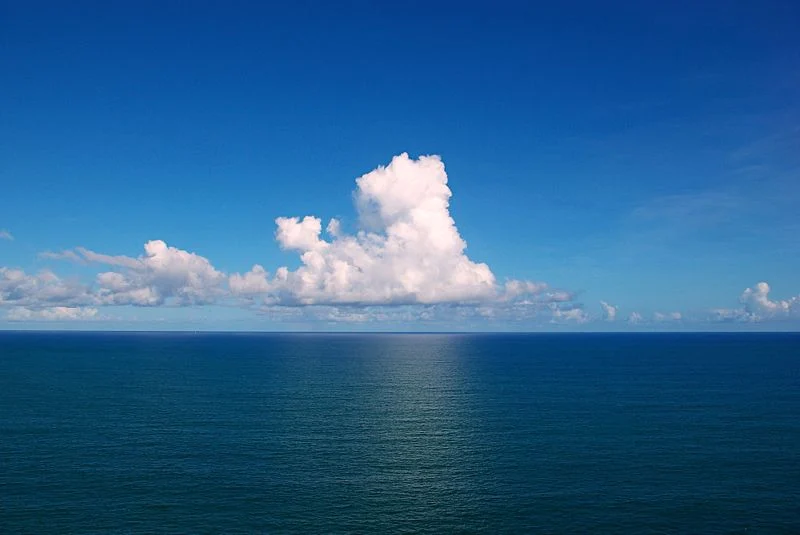Growing industrialization threatens the deep ocean’s ecosystems, considered key to the health of the planet.
The deep ocean, the largest domain for life on earth, is also its least explored environment. Humans are now encroaching more vigorously than ever into the ocean’s deep regions, exploiting the deep’s resources and placing its wealth of vibrant habitats and natural services for the planet at risk.

Lisa Levin, a biological oceanographer at Scripps Institution of Oceanography at UC San Diego, believes the vital functions provided by the deep sea—from carbon sequestration to nurturing fish stocks—are key to the health of the planet. As humans ramp up exploitation of deep-sea fish, energy, minerals, and genetic resources, a new “stewardship mentality” across countries, economic sectors, and disciplines is required, Levin says, for the future health and integrity of the deep ocean.
Levin and several other experts will describe this need during “Deep-Ocean Industrialization: A New Stewardship Frontier” at the annual meeting of the American Association for the Advancement of Science (AAAS) in Chicago at a news briefing (noon, Central Standard Time, Sunday, Feb. 16, AAAS Newsroom Headquarters: St. Gallen 2 room, Swissôtel, 323 East Upper Wacker Drive, Chicago, Ill. 60601) and scientific presentation (1:30-4:30 p.m. CST, Sunday, Feb. 16, Columbus EF at the Hyatt Regency Chicago, 151 East Wacker Drive, Chicago, Ill., 60601).
As the human population has more than doubled in the past 50 years, demand for food, energy, and raw materials from the sea has risen with it.
“At the same time, human society has undergone tremendous changes and we rarely, if ever, think about these affecting our ocean, let alone the deep ocean,” said Levin, who has conducted research on the deep sea for more than 30 years. “But the truth is that the types of industrialization that reigned in the last century on land are now becoming a reality in the deep ocean.”
“As we exhaust many coastal stocks, commercial fishers have turned towards deeper waters,” said Levin.
Beyond marine life depletion, the deep sea also is being threatened by the search for new sources for energy and precious materials. Oil and gas exploration now routinely targets seabeds in more than a thousand meters of water depth. Demand for modern technology devices—from cell phones to hybrid car batteries—has fueled a push by the mining sector to deep waters in search of new sources of metals and other materials.
“Vast tracts of deep seabed are now being leased in order to mine nodules, crusts, sulfides, and phosphates rich in elements demanded by our advanced economy,” said Levin. She added that rising carbon dioxide emissions are exposing deep-sea ecosystems to additional stress from climate change impacts that include warmer temperatures, altered food supplies, and declining pH and oxygen levels.
“Extraction from the deep sea is a tradeoff. Is the value of what we’re extracting greater than the damage?” asks Linwood Pendleton, director of the Ocean and Coastal Policy Program at the Nicholas Institute for Environmental Policy Solutions at Duke University. “Are there ways to extract that might be more economically costly but have lower ecological impact? How can we repair the considerable damage that has already been done to the sea floor through trawling, pollution, and other practices? These are questions that we need to answer before industrial activity gets ahead of scientific understanding.”
The deep sea holds a nearly infinite amount of genetic diversity, some of which could provide novel materials or future therapeutics to treat human diseases, but if not protected, these could be disturbed or lost before we discover them.
The need to preserve deep-sea ecosystems in the face of growing industrialization of the deep ocean, Levin says, requires a new “precautionary” mode of thinking about the deep sea that promotes sustainable, ecosystem-based management across industrial sectors and governance realms.
“We need international cooperation and an entity that can develop and oversee deep-ocean stewardship,” said Levin. “We also need multiple sources of research funding that can help provide the scientific information that we need to manage the deep sea. All of this will require efforts that bridge several disciplines and engage stakeholders in these discussions.”
“It is imperative to work with industry and governance bodies to put progressive environmental regulations in place before industry becomes established, instead of after the fact,” said Cindy Lee Van Dover, director of the Duke University Marine Laboratory. “One hundred years from now, we want people to say ‘they got this right based on the science they had, they weren’t asleep at the wheel.'”
“From a legal perspective, the deep ocean is filled with contradictions. Deep sea mineral resources located beyond national boundaries are part of the ‘Common Heritage of Mankind’ under international law, but the fish and octopi that swim just above the seafloor are not,” said Kristina Gjerde, senior high seas advisor to IUCN—the International Union for Conservation of Nature. “To prevent harm we can never hope to repair, precautionary rules need to be in place to guide all human uses of the deep ocean across boundaries and across sectors.”
Other AAAS participants include Samantha Smith (Nautilus Minerals) and Bronwen Currie (National Marine Information and Research Center). The scientific symposium is sponsored by the Deep-Ocean Stewardship Initiative and the Center for Marine Biodiversity and Conservation at Scripps.






